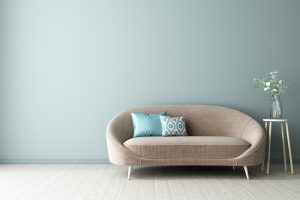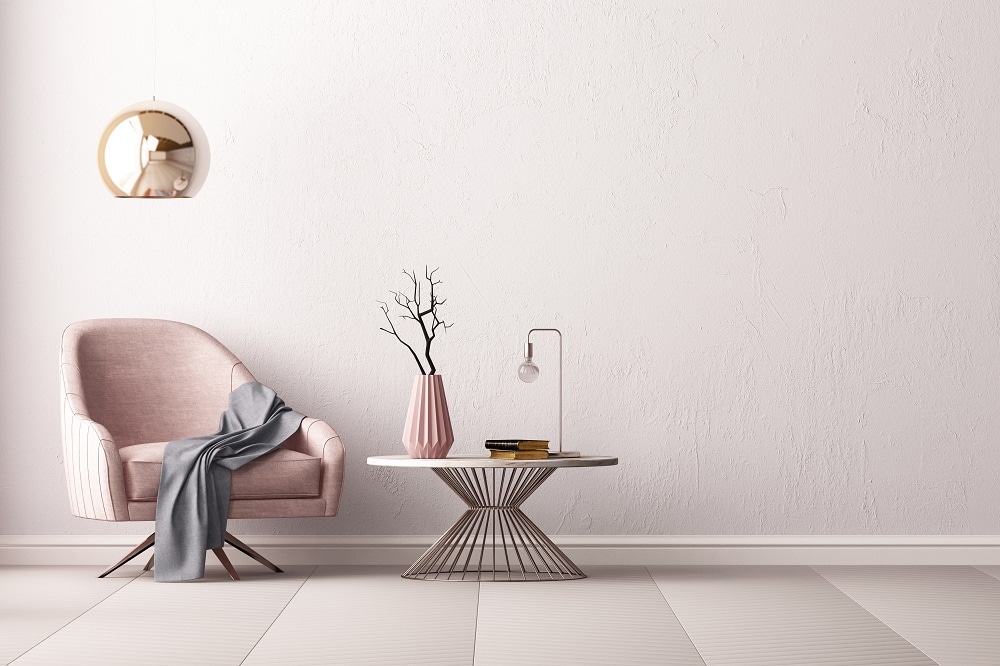There’s been a trend in modern architecture to incorporate additional light into interior spaces as a way of making residences appear bigger and more open. Despite those efforts, however, there will always be interior rooms of your home that simply don’t receive as much sunlight as others. House painting can help alleviate those low light conditions and brighten the space, but only if your painting contractors in Atlanta apply the proper colors.
While one would think that light colors would brighten darkened rooms, that’s not always the case. You have to be discerning about the colors you use, as selecting the wrong color can make things even worse. Choosing the proper colors for dark rooms during interior house painting projects involves a great eye for space and an understanding of how colors function in your overall design. Keep reading to learn more about choosing the proper paint colors for complementing the darkest rooms in your home.
White Doesn’t Equal Light
While your first impulse may be to add white to the darkest rooms in your home, that is not the best choice when attempting to brighten the color scheme. White is so intensely bright because of the physics of light. Things that are white reflect the most light of any color, which is why they appear to be bright. However, in order to reflect light, there must be light present in a room. A dark room may be devoid of such light, so painting the room white does little good. In fact, under certain circumstances, the presence of white amidst a lack of natural light can make a room look even dimmer. Therefore, though it may seem counterintuitive, avoid using large swaths of white in the darkest rooms of your home.
Consider Pastels
Pastel colors are perfect for lightening dark rooms and imparting character on what may otherwise be a drab, dimly lit space. Colors such as lavender, pink, and powder blue can lift the mood of a dark room. They lighten the color palette in a dark room but offer more aesthetic appeal than a simple shade of white. Therefore, you can not only create the illusion of a brighter room by using pastels, but you can also install a little of your own personal style and character in the space through your color choices.
Bright Colors Brighten
Just because you can’t use white doesn’t mean that there aren’t bright colors available to you for use in a dark room. Think of sunny colors such as orange, fuchsia, and yellow. Even a vivid, verdant green or an electric blue can be used on dark interior rooms to convey energy and simulate the illusion of light. Like pastels, these colors can also be selected to represent your own style, and they can be joined with other dominant color schemes in the house to create design continuity.
Gray Matters
 You may think that a usually drab color like gray would create the opposite effect in a dark room, but lighter shades of gray can lighten an interior space. Gray is less reflective than white, but it doesn’t absorb as much light as darker shades like black. It can provide a nice middle ground between extremes that will make a space look larger and brighter when lighter tones of gray are used. Also, it can act as a solid canvas for other bright colors in the space. For example, a light gray room with a brightly colored accent wall or pastel furniture can illuminate a room.
You may think that a usually drab color like gray would create the opposite effect in a dark room, but lighter shades of gray can lighten an interior space. Gray is less reflective than white, but it doesn’t absorb as much light as darker shades like black. It can provide a nice middle ground between extremes that will make a space look larger and brighter when lighter tones of gray are used. Also, it can act as a solid canvas for other bright colors in the space. For example, a light gray room with a brightly colored accent wall or pastel furniture can illuminate a room.
If you’re looking for ways to lighten the dimness of a dark interior room, be careful in selecting colors when painting. Avoid white, but be sure to use pastels, bright tones, and light grays to make the most of the available light in dark spaces. To learn more about choosing the right colors for dark rooms, contact Fillo Painting at (770) 769-7941.

